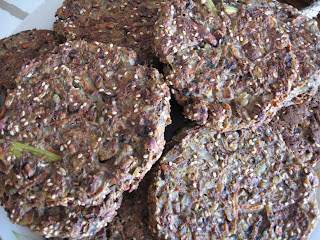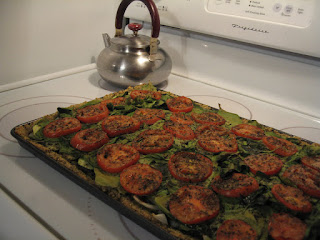I don't remember having any specific horrendous problems when I had this analysis. By the time I took this, I had been on the anti-candida diet for 4 months. I SHOULD HAVE seen some improvement in my condition by this time, but other than the fact that once I figured out my problem -- bacteria out of control, which I don't know but candida has 81 kinds, or so one website says -- I should have seen improvement on the diet that made my symptoms of 1 1/2 years virtually disappear in one week. But, anytime I tried adding anything, the problems (joint pain, asthma-like wheeziness, and chest tightness, among others) would reappear. The diet, however, was really contolling the problem though! Time for another hair analysis ... but strange that this hair analysis actually shows more (but not as bad) imbalances than my last one.


 RESULTSOut-of-balance ratios:sodium/potassium
RESULTSOut-of-balance ratios:sodium/potassium (Na/K) [increase] - if potassium low, kidneys reabsorb more sodium and potassium is excreted, and vice versa; result: acute stress or inflammation
calcium/potassium (Ca/K) [increase] - if potassium low, hypothyroidism results which is generally related to hypoglycemis, chronic fatigue, hypotension, melancholia
zinc/copper (Zn/Cu) [increase] - if copper low, cholesterol increases and cardiovascular disease may occur; if zinc is high compared with low-density lipoprotein; lipoprotein with high-density gravity is decreased resulting in fat deposits in arteries, which damages the immune system and/or increases bacterial infection, and in women, irregularity, PMS, fatigue, melancholia, weight gain, headache, constipation, breast pain, anxiety ...
Zinc - excessFunction: essential for male/female hormones and preventing diseases and viral infection; present in eyes, visual nerve, skin, adrenals, bone, brain, heart, kidney, liver, muscle, prostate, testicles (basically the organs)
Symptoms: fatigue, anorexia, hypotrophy, melancholia, apathy, apatheia, diarrhea, hypogeusia, hyposmia, postprandial fullness, anemia, night blindness, delay in injury curing, skin dryness, dermatitis, keratitis, alopecia areata, growth retardation, delay in sexual function matureness, sexual dysfunction (impotence) female infertility, diabetes, liver cirrhosis, increase in cholesterol
Iron - deficiencyFunction: generates hemaglobin, maintains intellectual abilities of the brain, essential in activating enzymes concerned in brain neurotransmitters; if bacterial infection, iron sent to organs including bones, liver, spleen, and lymph system
Symptoms: absorption disorder, parasite, malnutrition, drug, deficiency of other vitamins/minerals, anemia, fatigue, fingernail weakening, irregularity, constipation, dysphagia, hypothyroidism, infection by immunodepression, concentration disorders, depressed level of consciousness, brain damage and nervous development problems, ex. excessive behavior
Food: dry laver, coarse tea, curry, boiled hard-necked clam, green tea, dry anchovy, brewer's yeast, dry bamboo shoot, dry salted shrimp, boiled kelp, pig liver, roasted sesame, soybean, powdered beans; herbs: peppermint, chickweed, comfrey root, licorice root, goldenseal
Vanadium is useful for iron, as well as vitamins A, B1, B2, B3, B6, B12, C and E. Iron rich in animal protein.
Chromium - deficiencyFunction: helps absorption/use of glucose in cells with insulin, so if deficiency an increase in insulin results; relevant to nerve cells and vascular diseases; reinforces muscle and reduces fat
Causes of deficiency: excessive insulin, pregnancy, female hormones, hypothyroidism, hyperparathyroidism, infection, heart disease, anxiety, melancholia, mental/physical stress such as shock
Symptoms: may cause numbness/insensibility of limbs, peripheral neutropathy, arteriosclerosis, increased cholesterol level, interferes with vitamin C absorption, incurs diabetes symptoms, growth disorder, corneal opacity, headache, fatigue, anxiety and uneasiness
Food: brewer's yeast, wheat bread, roasted red peppers, shellfish, potato, wheat germ, eggs, chicken, apple, butter, clam, cheese, banana, carrot, cabbage, mandarine orange
Vitamins/Minerals: intake of iron, manganese, potassium, phosphorus, zinc and vitamins B1, B2, B3, B6, A and E increase chromium absorption.
Manganese - deficiencyFunction: spread in most body tissues, esp mitochondria in cells which gives the body energy; is an enzyme which activates other enzymes involving synthesis and metabolism of fatty acid, carbs and protein; prevents damage caused by free radicals, esp peroxide free radicals; maintains normal thyroid function
Symptoms: fatigue, headache, lack of endurance, weight loss, asthma, ringing in the ears, decrease in hearing ability, decrease in natural fat and lipoprotein due to metabolism disorders, results in musculoskeletal diseases (posture, growth, joint and waist disorders, tendon disorders, osteoporosis), infertility, degeneration of ovary and testicles, inborn errors of metabolism, ex apply syrup disease and Phenylketonuria; cause dermititis, delay in nail and hair growth, hair discoloration into reddish-brown
Food: brazil nuts, almonds, barley, rye, buckwheat, dry peas, wheat, walnuts, spinach, nuts, raisins, carrots, uncleaned rice, wheat bread, cheese and cabbage; a high protein diet can improve manganese levels
MERCURY (Hg) - increase!"Please be advised the 30% or more of the permissible range of mercury is deposited in the body!"
Damage to brain, kidneys, nerve system, unborn children. Once mercury enters the body through respiratory or digestive organs, 80% of it is deposited in the kidney and liver and seriously damages the brain.
Sources of mercury: amalgam, cosmetics, hairdye, manometer, thermometer, disinfectant, bactericide, agrichemicals, insecticide, flourescent lamps, manufacturing and transportation of petroleum products
Symptoms:
(early stage) alopecia, chronic fatigue, dizziness, melancholia, uneasiness, impatience, insomnia, anorexia, gingivitis, serious mood changes
(middle stage) alopecia, sterility, abortion, stillbirth, allergy, asthma, hypertension, stenocardia, palpitations, arthritis, nightmare, keratinization of the skin
(late stage) epilepsy, multiple sclerosis
Food: pectin, selenium, zinc, sulfur amino acids, vitamin C, beans, garlic, onion, eggs, parsley
[The only food I now eat at restaurants is small salt-water fish, once every two weeks or so. I also was eating about a can of tuna a week, and these two sources are probably where I got the increase in mercury. Yikes! Time to eliminate the canned fish now :( ]






































